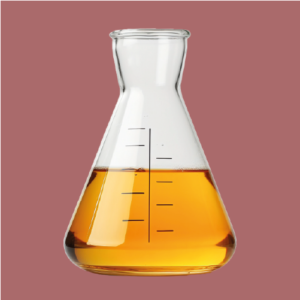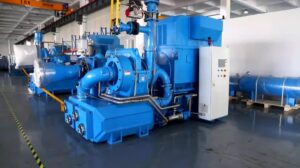Exploring group 5 base oil: An overview
What is group 5 base oil?
Different types of base oil
Base oils are classified into different groups based on their chemical structure and physical properties. Group I base oils are petroleum-based oils refined from crude oil, while Group II and III base oils are refined from vacuum gas oil. Group IV base oils are polyalphaolefins (PAO) and polyalkylene glycols (PAG), which are synthetic oils. Group V base oils include a variety of other synthetic and semi-synthetic oils. Understanding the different types of base oils is crucial for selecting the right one for a specific application.
Group I base oils are typically used in general-purpose lubricants, such as motor oils and hydraulic fluids. Group II base oils are used in high-performance lubricants, such as transmission fluids and brake fluids. Group III base oils are used in specialized lubricants, such as turbine oils and gear lubricants. Group IV base oils are used in high-performance applications, such as aerospace lubricants and industrial fluids. Group V base oils are used in a wide range of applications, including industrial fluids, greases, and specialty products.
Group 5 base oil & Base oil catalyst: Production processes of the base oil
5 Base oil production process involves several steps, including crude oil refining, vacuum distillation, hydrotreating, and hydrocracking. The crude oil is first refined to remove impurities and heavy metals. The resulting product is then vacuum distilled to separate the different fractions based on their boiling points. The resulting fractions are then hydrotreated to remove sulfur and nitrogen impurities. Finally, the hydrocracking process breaks down the complex molecules into simpler ones, resulting in a high-quality base oil.
The production process of base oil group 5 requires careful control of temperature, pressure, and catalysts to ensure that the desired properties are achieved. The hydrocracking process can be performed at temperatures ranging from 300°C to 400°C, depending on the specific requirements of the product being produced. The catalyst used in the hydrocracking process is typically a zeolite-based catalyst or a metal-based catalyst.
Group 5 base oil: Performance
Group 5 base oils have excellent performance characteristics, including high viscosity index, low volatility, and high thermal stability. They also have good corrosion protection properties and are resistant to wear and tear. These properties make them ideal for use in high-performance applications such as aerospace lubricants, automotive lubricants, and industrial fluids.
The performance characteristics of group 5 base oils can be attributed to their unique molecular structure. They have a high percentage of aromatic molecules, which provides them with good thermal stability and resistance to oxidation. They also have a low percentage of sulfur-containing molecules, which reduces their tendency to form sulfur-containing compounds that can cause corrosion.
Characteristics and Applications
Base oil catalysts 5 have several characteristics that make them suitable for various applications. They have a low viscosity index, which means they remain stable over a wide temperature range. They also have good corrosion protection properties and are resistant to wear and tear. These characteristics make them ideal for use in applications where high temperature stability and corrosion protection are critical.
Group 5 oil are commonly used in applications such as engine oils, gear lubricants, industrial fluids, and greases. They are also used in the production of synthetic lubricants and other specialty products. Their excellent thermal stability makes them suitable for use in high-temperature applications such as aerospace lubricants and industrial fluids.
Advantages and Common Uses

The advantages of group 5 base oils include their high performance characteristics, excellent chemical stability, and good environmental profile. They are commonly used in applications such as engine oils, gear lubricants, industrial fluids, and greases. They are also used in the production of synthetic lubricants and other specialty products.
Some common uses of group 5 base oils include:
- Engine oils: Group 5 base oils are used in engine oils due to their excellent thermal stability and corrosion protection properties.
- Gear lubricants: Group 5 base oils are used in gear lubricants due to their good low-temperature flowability and resistance to wear and tear.
- Industrial fluids: Group 5 base oils are used in industrial fluids due to their excellent thermal stability and corrosion protection properties.
- Greases: Group 5 base oils are used in greases due to their good corrosion protection properties and resistance to wear and tear.
Superior Performance and Applications
- Aerospace lubricants: Group 5 base oils are used in aerospace lubricants due to their excellent thermal stability and corrosion protection properties.
- Automotive lubricants: Group 5 base oils are used in automotive lubricants due to their good low-temperature flowability and resistance to wear and tear.
- Industrial fluids: Group 5 base oils are used in industrial fluids due to their excellent thermal stability and corrosion protection properties.
- Greases: Group 5 base oils are used in greases due to their good corrosion protection properties and resistance to wear and tear.
Group 5 base oil: Diverse and Specialized
Group 5 base oils are used in a wide range of applications due to their diverse characteristics. They can be blended with other additives to create specialized products with unique properties. They can also be formulated into various types of products such as synthetic lubricants, greases, and industrial fluids.
Some examples of specialized products made from group 5 base oils include:
- Synthetic lubricants: Group 5 base oils can be blended with other additives to create synthetic lubricants with unique properties.
- Greases: Group 5 base oils can be formulated into greases with specific properties such as corrosion protection or extreme pressure resistance.
- Industrial fluids: Group 5 base oils can be blended with other additives to create industrial fluids with specific properties such as thermal stability or corrosion protection.
What you need to know about base oils in lubricants
- Operating temperature range
- Load capacity requirements
- Environmental considerations
- Performance characteristics required by the application
Why the type of base oil you have in a lubricant matters
The type of base oil used in a lubricant can significantly impact its performance characteristics. Different types of base oils have different properties that can affect the lubricant’s viscosity index, corrosion protection properties, wear resistance, and thermal stability.
Some examples of how different types of base oils can affect a lubricant’s performance include:
- A petroleum-based lube may have poor cold-start performance compared to an synthetic lube.
- A petroleum-based lube may not provide adequate corrosion protection compared to an additive-treated lube.
- A synthetic lube may provide better wear resistance compared to an additive-treated lube.
By understanding how different types of base oils affect performance characteristics, you can make informed decisions when selecting a lubricant for your application.
How to Choose the Right Base Oil for Your Application
When choosing a lubricant for your application, it’s essential to consider several factors including operating temperature range, load capacity requirements, environmental considerations, and performance characteristics required by the application.
Some steps you can take when selecting a lubricant include:
- Identify your application’s requirements
- Determine the operating temperature range
- Consider environmental factors
- Evaluate performance characteristics required by the application
- Research different types of bas
- Consider the type of equipment or machinery being used
- Research different types of base oils and their properties
- Evaluate the pros and cons of each type of base oil
- Consult with experts or industry professionals
- Test and evaluate different lubricants
The Future of Base Oils
The future of base oils is evolving, with new technologies and innovations being developed to improve their performance and sustainability. Some trends that are expected to shape the future of base oils include:
- Increased focus on sustainability and environmental responsibility
- Development of new, eco-friendly base oil technologies
- Improved performance characteristics, such as higher viscosity indexes and better thermal stability
- Increased use of recycled and re-refined base oils
- Development of new applications for base oils, such as in biodegradable lubricants
As the demand for sustainable and high-performance lubricants continues to grow, it’s likely that the industry will see significant advancements in base oil technology.
Conclusion: Navigating the World of group 5 base oil
Base oils play a critical role in the production of lubricants, and understanding their properties and characteristics is essential for selecting the right lubricant for your application. Whether you’re looking for a petroleum-based or synthetic lubricant, there’s a base oil out there that can meet your needs. By considering factors such as operating temperature range, load capacity requirements, environmental considerations, and performance characteristics required by the application, you can make an informed decision when selecting a lubricant. With new technologies and innovations on the horizon, the future of base oils is exciting and full of possibilities.
FAQs

Calcium Sulphonate Grease UAE | High-Temperature Grease
Calcium Sulphonate Grease UAE | High-Temperature Grease Discover More Introduction: The Unforgiving Demands of UAE Industry The United Arab Emirates stands as a global titan of industry and infrastructure. From the sprawling metallurgical plants in Mussafah and the massive port operations of Jebel Ali to the relentless pace of construction shaping Dubai’s skyline and the vast logistics hubs of Al Ain, the machinery that powers this nation operates under extreme duress. Soaring ambient temperatures that regularly exceed 45°C, pervasive dust

What is Rubber Process Oil? | Guide to Applications, Benefits, and Selection
What is Rubber Process Oil? | Guide to Applications, Benefits, and Selection Discover More In the sophisticated ecosystem of rubber manufacturing, raw polymers are the canvas, but rubber process oil is the essential medium that brings the masterpiece to life. It is the critical component that transforms rigid, unworkable raw materials into the versatile, durable, and high-performance rubber products that define modern industry and daily convenience. For specialists dedicated to chemical innovation and precision, such as the team at Rumanza Lubricants, the science

Which UAE Lubricants manufacturers is Best for High-Mileage Engines?
Which UAE Lubricants manufacturers is Best for High-Mileage Engines? Discover More The sprawling deserts and bustling metropolises of the United Arab Emirates present a uniquely demanding environment for vehicles, pushing engine lubrication technology to its absolute limits. From the scorching summer heat that can cause conventional oils to thin out and lose protective properties, to the endless stop-start traffic of cities like Dubai and Abu Dhabi that promotes sludge and acidic buildup, our cars endure a severe service regimen unlike

What Vehicles Use Kerasene? A Comprehensive Guide
What Vehicles Use Kerasene? A Comprehensive Guide to Fueling Beyond Gasoline Discover More When we think of vehicle fuel, gasoline and diesel immediately come to mind. They are the lifeblood of our daily commutes, the power behind the trucks that deliver our goods, and the standard by which we measure automotive progress. But venture beyond the everyday, into the realms of high-altitude aviation, rugged agricultural machinery, and groundbreaking space exploration, and you’ll discover a different, equally vital fuel that operates

How To Chose Antioxidant Additives in UAE | Industrial Grade Chemicals?
How To Chose Antioxidant Additives in UAE | Industrial Grade Chemicals? Discover More In the heart of a rapidly industrializing region, the United Arab Emirates stands as a beacon of manufacturing, logistics, and heavy industry. From the sprawling automotive workshops of Dubai to the massive petrochemical complexes in Ruwais, the performance and longevity of machinery are paramount. At the core of this operational excellence lies a critical, yet often overlooked, component: industrial lubricants and fluids. These lifeblood substances are constantly

Viscosity Index Improvers UAE – Improve Lubricant Performance
Viscosity Index Improvers UAE – Improve Lubricant Performance Discover More In the heart of the United Arab Emirates, where ambition is matched only by the scale of its infrastructure, the machinery that builds and powers the nation faces a relentless adversary: the climate. The combination of extreme heat, temperature volatility, abrasive dust, and intense UV radiation creates a perfect storm of conditions that relentlessly attack the lifeblood of all mechanical systems—the lubricant. For maintenance managers, plant operators, and fleet owners,

Compressor Oils UAE | Lubricants for Air Compressors
Compressor Oils UAE | Lubricants for Air Compressors Discover More In the relentless engine of the UAE’s economy, where ambition is matched only by the scale of its construction and industry, air compressors are the indispensable workhorses. They are the silent force driving the pneumatic tools that build our skylines, the automated machinery in our factories, the climate control systems in our buildings, and even the processes in oil and gas refineries. Yet, within these critical machines, a component often

How to Chose Best Diesel Engine Oil in UAE for Your Vehicle | Get Quote
Guide to Choosing the Best Diesel Engine Oil in UAE For Your Vehicle Discover More In the United Arab Emirates, the relationship between a driver and their vehicle is forged in fire. The unrelenting sun, the searing asphalt, and the ever-present fine sand create an operating environment that is among the most punishing on Earth. For the diesel engines that power the UAE’s growth—from the rugged Land Cruisers conquering dunes to the Ford F-150s on city streets and the fleets